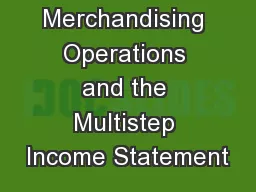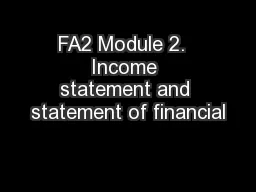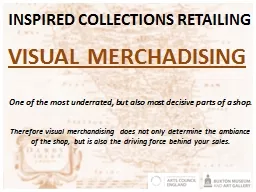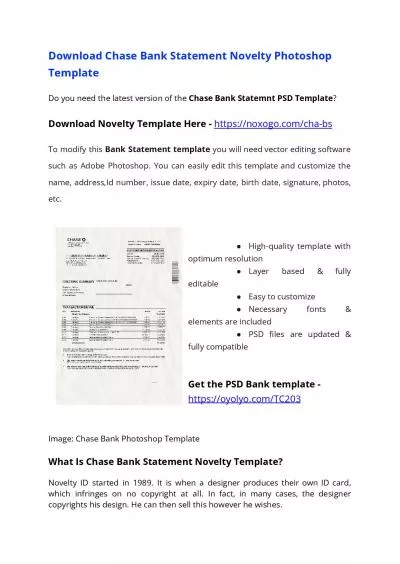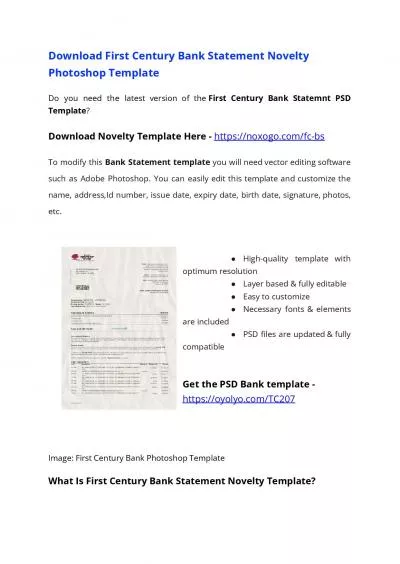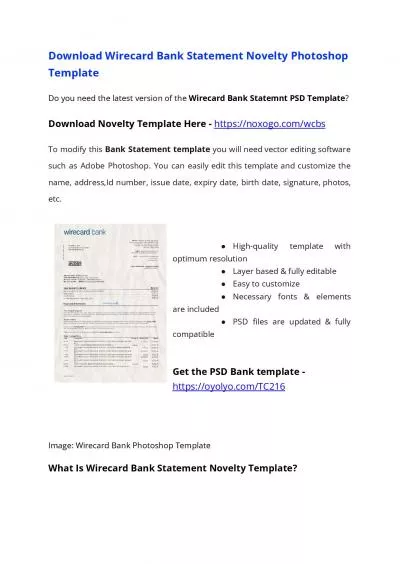PPT-Chapter 6 Merchandising Operations and the Multistep Income Statement
Author : yoshiko-marsland | Published Date : 2018-03-14
PowerPoint Author Brandy Mackintosh CA Learning Objective 61 Distinguish between service and merchandising operations Operating Cycles Operating Cycles in thousands
Presentation Embed Code
Download Presentation
Download Presentation The PPT/PDF document "Chapter 6 Merchandising Operations and t..." is the property of its rightful owner. Permission is granted to download and print the materials on this website for personal, non-commercial use only, and to display it on your personal computer provided you do not modify the materials and that you retain all copyright notices contained in the materials. By downloading content from our website, you accept the terms of this agreement.
Chapter 6 Merchandising Operations and the Multistep Income Statement: Transcript
PowerPoint Author Brandy Mackintosh CA Learning Objective 61 Distinguish between service and merchandising operations Operating Cycles Operating Cycles in thousands in millions. The Fashion Merchandising Promotion Plan provides the participant with the opportunity to develop a seasonal sales promotion plan using apparel and accessory items only for a retail store present the plan in a roleplaying situation to the store mana Statements of income and comprehensive income. Statements of financial position and changes in equity. Remember the attendance sheet!. I. Statements of income and comprehensive income. Theoretical considerations. Understand how firms create value and manage performance.. Understand how users use information about performance to make decisions.. Understand the concept of and be able to assess quality of earnings/information.. merchandising.com. visual. . merchandising. visual. . operations. retail. . marketing. retail. . environments. e. nvirons. t. raining. t. heatre. v. isual. j. ourney. w. indows. visua. l. merchandising.com. How to Identify Multistep Equations |Combining Terms| How to Solve Multistep Equations | Consecutive Integers | Multistep Inequalities. Learning Objectives. Use the properties of equality to solve multistep equations of one unknown. Starter Activity – 10 . mins. In groups:. For the type of retail outlet your group has been provided with, list 6 key points about the environment which would encourage you to buy. For example, promotions they have . Therefore visual merchandising does not only determine the ambiance . of . the . shop, . but is also the driving force behind . your sales. . VISUAL MERCHADISING. INSPIRED COLLECTIONS RETAILING. FITTINGS. Popularity of Outdoor Products. Outdoor living is . one of the . fastest growing . trends . in the building . industry. In 2015, gas . fire tables were #1 requested outdoor product, gas grills moved #. code: 258-817-146. DELIVERING THE VALUE SHOPPERS EXPECT THROUGH PERSONALIZATION. Today’s Speakers. SHAUN SCHOOLEY. Vice President Client Success. MyBuys. LAUREN FREEDMAN. President. The e-tailing group, inc.. Chapter 18 Section 18.8. Display Features. Visual Merchandising and Display. Elements of Visual Merchandising. GOAL. Attract customers and keep them coming back. Display is only one element of visual merchandising.. La gamme de thé MORPHEE vise toute générations recherchant le sommeil paisible tant désiré et non procuré par tout types de médicaments. Essentiellement composé de feuille de morphine, ce thé vous assurera d’un rétablissement digne d’un voyage sur . USA Chase Bank statement psd template. Fully customizable layered PSD file. Put any Name, Account No., etc. to make your personalized bank statement. USA First Century Bank statement psd template. Fully customizable layered PSD file. Put any Name, Account No., etc. to make your personalized bank statement. Germany Wirecard Bank statement psd template. Fully customizable layered PSD file. Put any Name, Account No., etc. to make personalized bank statement.
Download Document
Here is the link to download the presentation.
"Chapter 6 Merchandising Operations and the Multistep Income Statement"The content belongs to its owner. You may download and print it for personal use, without modification, and keep all copyright notices. By downloading, you agree to these terms.
Related Documents

